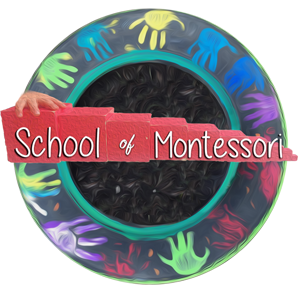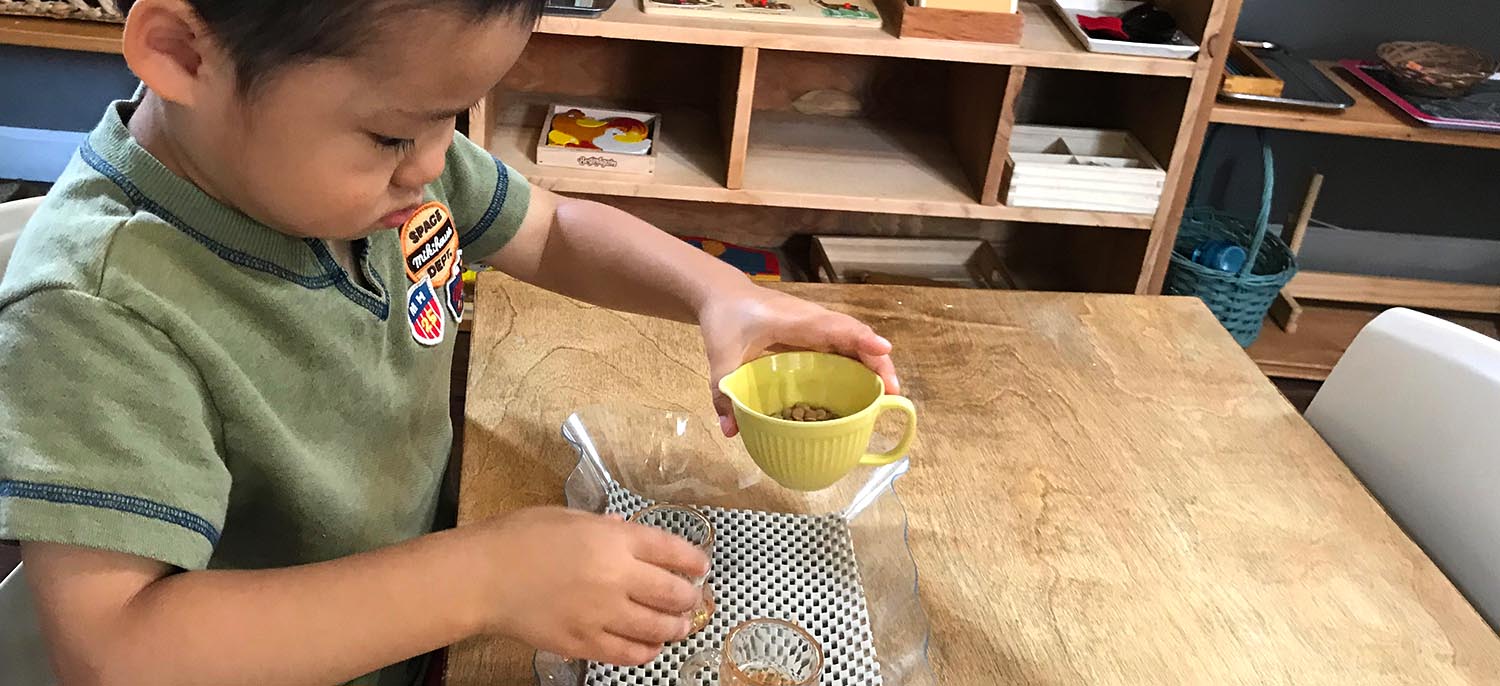Pouring work is another familiar exercise that prepares students for advanced activities later in their learning path. There are a variety of pouring containers, materials to pour, and ways to execute this activity, which we will detail in the lessons of this course.
Age
- 2.5 and Older
Category
Control of Movement
Preparation
Prerequisites
None
Materials
- Tray
- Two identical cups with handles and no spouts.
- A level line should be on each cup.
- A dot should be inside the cups on the bottom.
- A small amount of large bean (lima) in the left cup.
- Liquid and a funnel can also be used.
Activity Area
- Shelf to Table
Language
- Bean
- Specific name of bean or item being poured
- Cup Handle
- Spout
- Full
- Empty
- Dot
- Level Line
- Funnel
- Pitcher
- Pouring
- Wipe
- Line
- Stop
Points of Interest
- Noticing the dot and the level line in the cup.
- Noticing the full cup and the empty cup.
- Holding the handle using TFG.
- Placing the non-gripping hand on the cup.
- Hearing the sounds the beans make when emptying the cup.
- Pouring in a slow even stream.
Control of Error
- Seeing spilled beans.
- Hearing one cup touch another or the tray.
Direct Aims
- To increase concentration.
- To increase coordination.
- To develop a sense of independence.
- Control of movement.
- To develop left to right sequence.
Indirect Aims
- Preparation for writing.
- Preparation for reading.
Aditional Exercises
- Pouring smaller beans or macaroni
- Bean pouring with a spout
- The procedure is the same as above except use a smaller bean such as a pinto. Introduce the spout to the child. Explain that you must pour through the spout in a slow even stream.
- Rice pouring.
- Use two cups with spouts (preferably transparent) and the procedure is the same as above.
- Pouring sand.
- Pouring using measuring cups.
Extensions
- Using various dry quantities for the study of volume.
- Making a terrarium.
- Filling a sugar bowl.
- Filling containers with unused rice or beans.
- Funnel pouring.
About Instructor

Login
Accessing this course requires a login. Please enter your credentials below!

